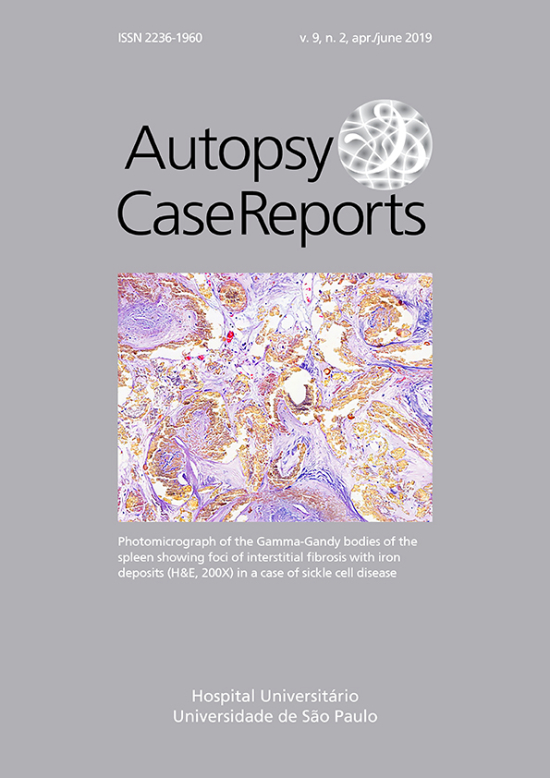Infantile systemic juvenile xanthogranuloma case with massive liver infiltration
Keywords:
Autopsy, Congenital, Xanthogranuloma, Juvenile, Liver DiseasesAbstract
Infantile systemic juvenile xanthogranuloma (ISJXG) is an uncommon form of juvenile xanthogranuloma, a non-Langerhans cell proliferation of infancy and early childhood. In a small percentage of patients, the visceral involvement—most commonly to the central nervous system, liver, spleen, or lungs—may be associated with severe morbidity, and eventually fatal outcome. Here we describe the clinical and pathological findings of a 28-day-old girl with ISJXG who died with respiratory distress syndrome. She had few cutaneous lesions but massive liver and spleen infiltration; other affected organs were multiple lymph nodes, thoracic parasympathetic nodule, pleura, pancreas, and kidneys. Additional findings were mild pulmonary hypoplasia and bacteremia. Immunohistochemistry on fixed tissues is the standard for diagnosis. Immunophenotype cells express CD14, CD68, CD163, Factor XIIIa, Stabilin-1, and fascin; S100 was positive in less than 20% of the cases; CD1a and langerin were negative. No consistent cytogenetic or molecular genetic defect has been identified. This case demonstrates that the autopsy is a handy tool, because hepatic infiltration, which was not considered clinically, determined a restrictive respiratory impairment. In our opinion, this was the direct cause of death.
Downloads
Published
Issue
Section
License
Copyright
Authors of articles published by Autopsy and Case Report retain the copyright of their work without restrictions, licensing it under the Creative Commons Attribution License - CC-BY, which allows articles to be re-used and re-distributed without restriction, as long as the original work is correctly cited.



